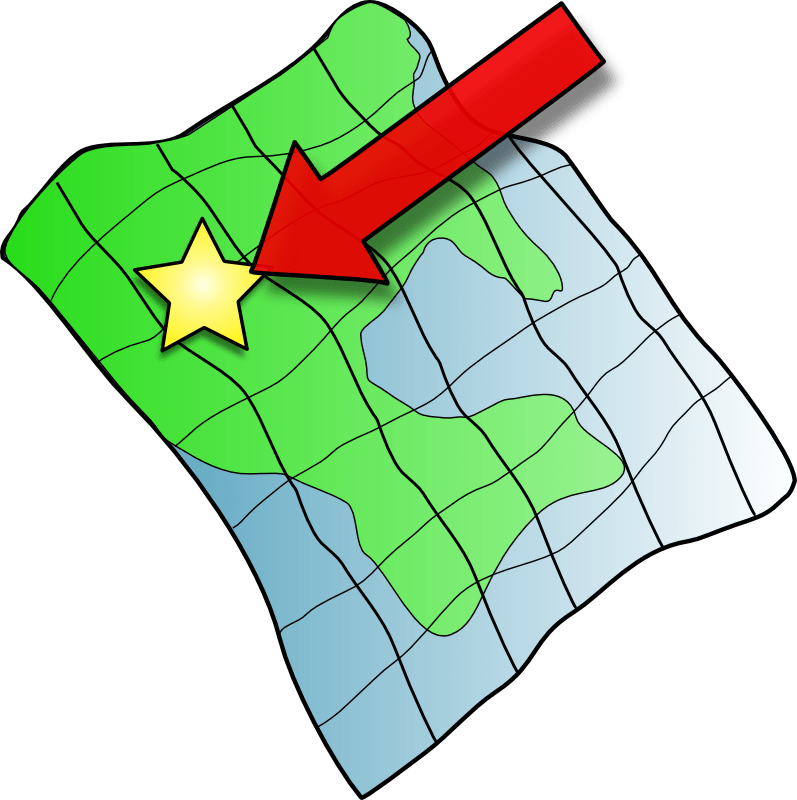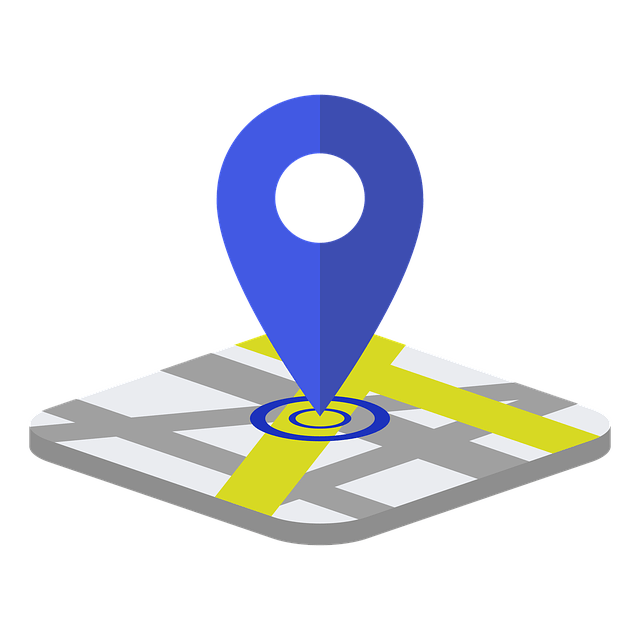Quick Look
Grade Level: 5
Time Required: 1 hour
Expendable Cost/Group: US $0.00
Group Size: 3
Activity Dependency: None
Subject Areas: Earth and Space
NGSS Performance Expectations:

| 3-5-ETS1-2 |

Summary
Finding themselves in the middle of the Amazon rainforest after a plane crash, students use map scales, keys, and longitude and latitude coordinates to figure out where they are. Then they work in groups to generate ideas and make plans. They decide where they should go to be rescued, the distance to that location, the route to take, and make calculations to estimate walking travel time.Engineering Connection
Engineers work in teams to develop solutions to problems. Following the steps of the engineering design process, engineers first identify and define the problem or challenge. They gather information and conduct research to learn about the topics related to the problem, and they brainstorm and propose multiple possible solutions. They make calculations and evaluate various potential solutions, selecting and acting on the one that best meets the criteria for success.
Learning Objectives
- Demonstrate their knowledge of metric units to measure distance.
- Use scale, key, latitude and longitude to interpret maps.
- Describe the motion of an object by tracing and measuring its position over time.
Educational Standards
Each TeachEngineering lesson or activity is correlated to one or more K-12 science,
technology, engineering or math (STEM) educational standards.
All 100,000+ K-12 STEM standards covered in TeachEngineering are collected, maintained and packaged by the Achievement Standards Network (ASN),
a project of D2L (www.achievementstandards.org).
In the ASN, standards are hierarchically structured: first by source; e.g., by state; within source by type; e.g., science or mathematics;
within type by subtype, then by grade, etc.
Each TeachEngineering lesson or activity is correlated to one or more K-12 science, technology, engineering or math (STEM) educational standards.
All 100,000+ K-12 STEM standards covered in TeachEngineering are collected, maintained and packaged by the Achievement Standards Network (ASN), a project of D2L (www.achievementstandards.org).
In the ASN, standards are hierarchically structured: first by source; e.g., by state; within source by type; e.g., science or mathematics; within type by subtype, then by grade, etc.
NGSS: Next Generation Science Standards - Science
| NGSS Performance Expectation | ||
|---|---|---|
|
3-5-ETS1-2. Generate and compare multiple possible solutions to a problem based on how well each is likely to meet the criteria and constraints of the problem. (Grades 3 - 5) Do you agree with this alignment? |
||
| Click to view other curriculum aligned to this Performance Expectation | ||
| This activity focuses on the following Three Dimensional Learning aspects of NGSS: | ||
| Science & Engineering Practices | Disciplinary Core Ideas | Crosscutting Concepts |
| Generate and compare multiple solutions to a problem based on how well they meet the criteria and constraints of the design problem. Alignment agreement: | Research on a problem should be carried out before beginning to design a solution. Testing a solution involves investigating how well it performs under a range of likely conditions. Alignment agreement: At whatever stage, communicating with peers about proposed solutions is an important part of the design process, and shared ideas can lead to improved designs.Alignment agreement: | Engineers improve existing technologies or develop new ones to increase their benefits, to decrease known risks, and to meet societal demands. Alignment agreement: |
Common Core State Standards - Math
-
Solve unit rate problems including those involving unit pricing and constant speed.
(Grade
6)
More Details
Do you agree with this alignment?
International Technology and Engineering Educators Association - Technology
-
Identify and collect information about everyday problems that can be solved by technology, and generate ideas and requirements for solving a problem.
(Grades
3 -
5)
More Details
Do you agree with this alignment?
State Standards
Colorado - Science
-
There are different forms of energy, and those forms of energy can be changed from one form to another – but total energy is conserved
(Grade
8)
More Details
Do you agree with this alignment?
Materials List
- rulers, at least two per group
- Student Guide Worksheet, one per student
- larger-sized map of area around Manaus, Brazil, from which to make measurements of distance (make a larger copy of the map found on the second page of the student worksheet by making a copier enlargement or tracing a projected overhead transparency of the map at a larger size)
- (optional) backpack, books and bathroom scale
Worksheets and Attachments
Visit [www.teachengineering.org/activities/view/csm_amazon_lesson1_activity1_tg] to print or download.Pre-Req Knowledge
Familiarity with how to use a map, including its key, scale, longitude, latitude and ordinate coordinates.
Introduction/Motivation
(Read aloud to the class the continuing storyline, which is also provided at the top of the Student Guide Worksheet.)
The pilot awakens to find you and your teammates gathered around him. He has a bandage on his head and tries to talk.
"There is a map... in the cockpit... the monitor... look at the monitor," the pilot manages to say before he faints. He is too weak to stay conscious very long, so you go to the cockpit and find the map and the monitor.
You and your teammates look at the map. "Where are we? It all looks like a jungle to me," says someone.
Maria, who paid attention in geography class, speaks up. "Well, we can see our latitude and longitude on the monitor. It shows us exactly where we are using the global positioning system satellites in the sky. Now we can figure out where we are on the map, where we want to go and how far away it is!" Everyone looks at the map, hoping the nearest city isn't very far away.
Procedure
- Divide the class into groups of three students each. Hand out the student worksheets and rulers. Direct students to work as a team to follow the procedure instructions on the worksheet.
- On the worksheet map, notice the scale, key, latitude and longitude markings. The students go through a short exercise in measuring the distance between two cities of their choice; first calculating the distance in inches and then converting to miles.
- You may want to work an example as a class and have students follow along and write down the results. If they have a hard time understanding scale, this is an ideal time to explain it in more detail. Encourage students to help each other in their engineering groups.
- Tip: Sometimes it helps students to use a small yellow sticky note to duplicate the scale and then measure the line.
- Students may come up with different final destinations. Have them discuss, first in their groups, then as a class, which route is the best and why? Is it a shorter distance? Is it more efficient? Is it less strenuous? Have students vote on the city of destination as a class. (Manaus is the optimal destination; reasons provided, below.)
- You may want to record, chart and average the results from the different groups as a class.
- As a class, mark the final destination (Manaus) with an O on the large-sized paper map or overhead transparency map. Mark with an X the crash location (latitude: 2 1/2° S, longitude: 60° W).
- Discuss the possible routes for travel from the crash site to various locations on the map that students may have initially chose (if they differ from Manaus). Compare the distance and route to Manaus with these other routes. Emphasize that travel to Manaus is probably the best choice (closest city, has an airport, easy travel down the river Negro).
- Draw a dashed line on the map between the X and O. Explain to students that the fastest way of travel is not always in a straight line. What possible routes might students choose? Would it be faster and easier to travel to a river so they could raft it? Where might they meet up with explorers or other traveling people?
- Require students to make educated guesses about other alternative methods of traveling, whether by land or river. As a class, discuss the advantages and disadvantages and decide on the fastest and easiest method (getting to the nearest river and building rafts). This route takes you down the Rio Negro and straight into Manaus. The river should provide plenty of fish (easy source of food) and since it is a major river, you will likely meet other people on it, who can help you safely to Manaus.
- After group discussion, draw the planned path on the class map (solid line).
- For the next part of this activity, estimating the time of travel, you may want to discuss with students the concept of a speed modifier (see Table 3 on the worksheet).
- To help students gain a better understanding of how heavy 25-30 lbs. feels, load a backpack with books (or reams of paper or gallons of water) weighed on a bathroom scale and have them try it on. Remind them that they will have to carry this throughout their journey. Note: This activity will be useful for Lesson 2, during which students must decide what supplies they to take with them based on usefulness and weight.
Assessment
Worksheet: Have student groups follow the procedure on the Student Guide Worksheet to complete the activity, make calculations and answer questions. Review their answer to gauge their comprehension of the subject matter.
Activity Extensions
For extra credit, have students make their own travel rate tables, and/or test the tables. Do this by having students walk a mile (or one-quarter mile, etc., depending on their abilities), and time how long it takes. You might have them carry their backpack as well. (If walking a fraction of a mile, multiply the time by the reciprocal to obtain the one-mile time. For example, if a student walks one-quarter mile, multiply the time by 4 to calculate the total time for a mile). Using the fractions given (*2/3 for carrying supplies, *1/2 for forest), they can determine how far they can walk in an hour. Note: One mile usually takes about 20 minutes to walk.
Have students write an assessment of their travel plans. In their opinions, why or why not is this the best choice? How often do they think they will need to rest? Do they think that they (personally) could travel more or less during the day? How would conditions like heat, duration, altitude and terrain factor into their answers?
Subscribe
Get the inside scoop on all things TeachEngineering such as new site features, curriculum updates, video releases, and more by signing up for our newsletter!More Curriculum Like This

Students explore using a GPS device and basic GIS skills. They gain an understanding of the concepts of latitude and longitude, the geocaching phenomenon, and how location and direction features work while sending and receiving data to a GIS such as Google Earth.
Copyright
© 2013 by Regents of the University of Colorado; original © 2005 Colorado School of MinesSupporting Program
Adventure Engineering, Colorado School of MinesAcknowledgements
Adventure Engineering was supported by National Science Foundation grant nos. DUE 9950660 and GK-12 0086457. However, these contents do not necessarily represent the policies of the National Science Foundation, and you should not assume endorsement by the federal government.
Last modified: May 10, 2017







User Comments & Tips